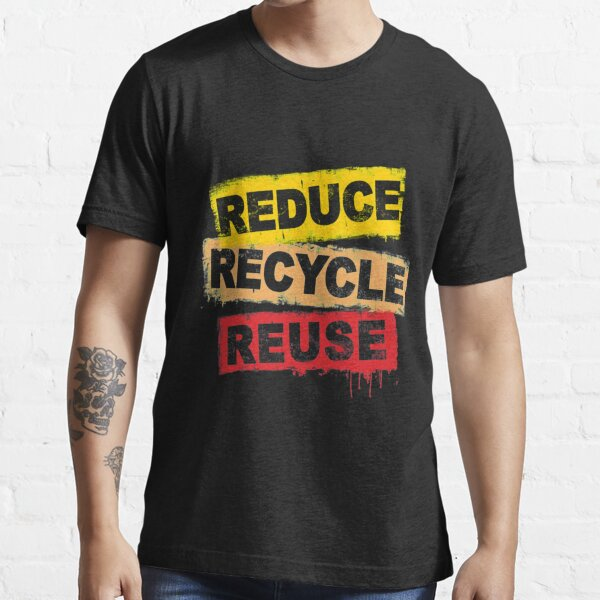When one of my grandkids asked me what the “T” in “T-shirt” stood for, I was caught off guard. I wear T-shirts all the time, they’re in everyone’s closet, yet I had never really thought about the name. Surely, there had to be a reason why this staple piece of clothing is called a T-shirt, right? So, I went on a mission to find out. What I discovered was fascinating—it turns out the T-shirt has a richer history and cultural significance than most of us realize.
If you’ve ever been stumped by this question like I was, or you’re just curious about the origins of this everyday wardrobe essential, keep reading. We’ll explore how the humble T-shirt got its name, its historical evolution, and why it’s more than just a piece of fabric.
The “T” in T-shirt: A Simple Answer

The “T” in “T-shirt” comes from its shape. When laid out flat, the T-shirt forms a perfect “T” shape. The body of the shirt represents the long vertical line of the letter “T,” while the short sleeves create the horizontal bar across the top. Simple as that! But there’s more to this story than just the shape of the shirt.
The Early Beginnings: From Undergarment to Outerwear
Before T-shirts became the casual outerwear we know today, they had a much more utilitarian purpose. In the late 19th and early 20th centuries, T-shirts were mainly used as undergarments. Men who worked in labor-intensive jobs like construction, farming, and manufacturing wore T-shirts underneath their work uniforms. These shirts were affordable, easy to clean, and durable—perfect for the tough, dirty jobs many men had at the time.
But here’s the kicker: at first, the T-shirt was strictly an undergarment. It wasn’t something you’d wear out in public unless you were a child or doing some manual labor. But, as we’ll see, that soon changed.
World War II: A Turning Point for the T-shirt
The real evolution of the T-shirt began during World War II. Soldiers were issued basic white cotton T-shirts as part of their standard-issue gear. The shirt was comfortable, breathable, and easy to maintain, making it perfect for soldiers stationed in warmer climates. After the war, many soldiers continued wearing their T-shirts back home, and the casual look started to catch on with the public.
Hollywood helped speed up the transition of the T-shirt from an undergarment to an outerwear staple. Iconic actors like Marlon Brando and James Dean famously sported T-shirts in their movies, making the garment look cool, rebellious, and stylish. This surge of interest helped cement the T-shirt as a fashion item in its own right.
From Plain White to Personal Expression
T-shirts didn’t stay plain for long. In the 1960s and 70s, people began using T-shirts as a canvas for personal expression. Tie-dye became a hallmark of the counterculture movement, and T-shirts soon became emblazoned with band logos, political messages, and artwork. Suddenly, the T-shirt wasn’t just a piece of clothing—it was a form of self-expression.
Nowadays, T-shirts can say a lot about who we are. Whether it’s a graphic tee featuring a favorite band, a message of social change, or even just a quirky phrase, T-shirts let us wear our personality on our sleeves—literally!
T-shirts and the Fashion Industry

Over the decades, the T-shirt has become a vital piece of the fashion industry. Designers, brands, and artists have turned the T-shirt into a creative outlet. High-end brands have put their spin on the classic tee, using premium materials or adding artistic touches that elevate the simple garment into a fashion statement.
It’s not just the fabric or the cut that makes a T-shirt special. The T-shirt’s ability to adapt to trends while staying a constant wardrobe staple is what makes it timeless. Even in the age of fast fashion, T-shirts remain as relevant today as they were over 100 years ago.
T-shirts as Cultural and Political Symbols
The T-shirt has also become a powerful tool for cultural and political expression. From campaign slogans to protest statements, T-shirts have been used to share messages with the world. In many ways, wearing a T-shirt with a slogan or graphic has become a form of peaceful protest, allowing people to express their beliefs without saying a word.
Think about it—how many times have you seen someone wearing a T-shirt that makes a statement, whether it’s about equality, the environment, or a social cause? The T-shirt has evolved into more than just clothing; it’s a way to contribute to conversations and movements in society.
The Legacy of the T-shirt: More Than Just a Letter

So, what started as a simple question from my grandkids turned into a journey of discovery. The T-shirt, named after its distinctive “T” shape, has a fascinating history that spans from a humble undergarment to a powerful medium for self-expression and cultural influence.
The next time you pull on your favorite T-shirt, take a moment to appreciate the journey this piece of clothing has made. From soldiers to Hollywood stars, from laborers to fashion icons, the T-shirt has truly stood the test of time. And now, when someone asks you what the “T” in “T-shirt” stands for, you can confidently say, “It’s all about the shape!” But now you’ll know that the real story goes far beyond that.
Conclusion: The T-shirt’s Journey Through Time
The next time you grab your favorite T-shirt from the drawer, you’ll likely see it in a new light. It’s not just a comfortable garment—it’s a piece of history. From its humble beginnings as an undergarment to a symbol of personal and political expression, the T-shirt has cemented its place in both fashion and culture. And all of this, thanks to its simple “T” shape.
So, the next time someone asks, “What does the ‘T’ in T-shirt stand for?”—you’ll know the answer, and so much more.


